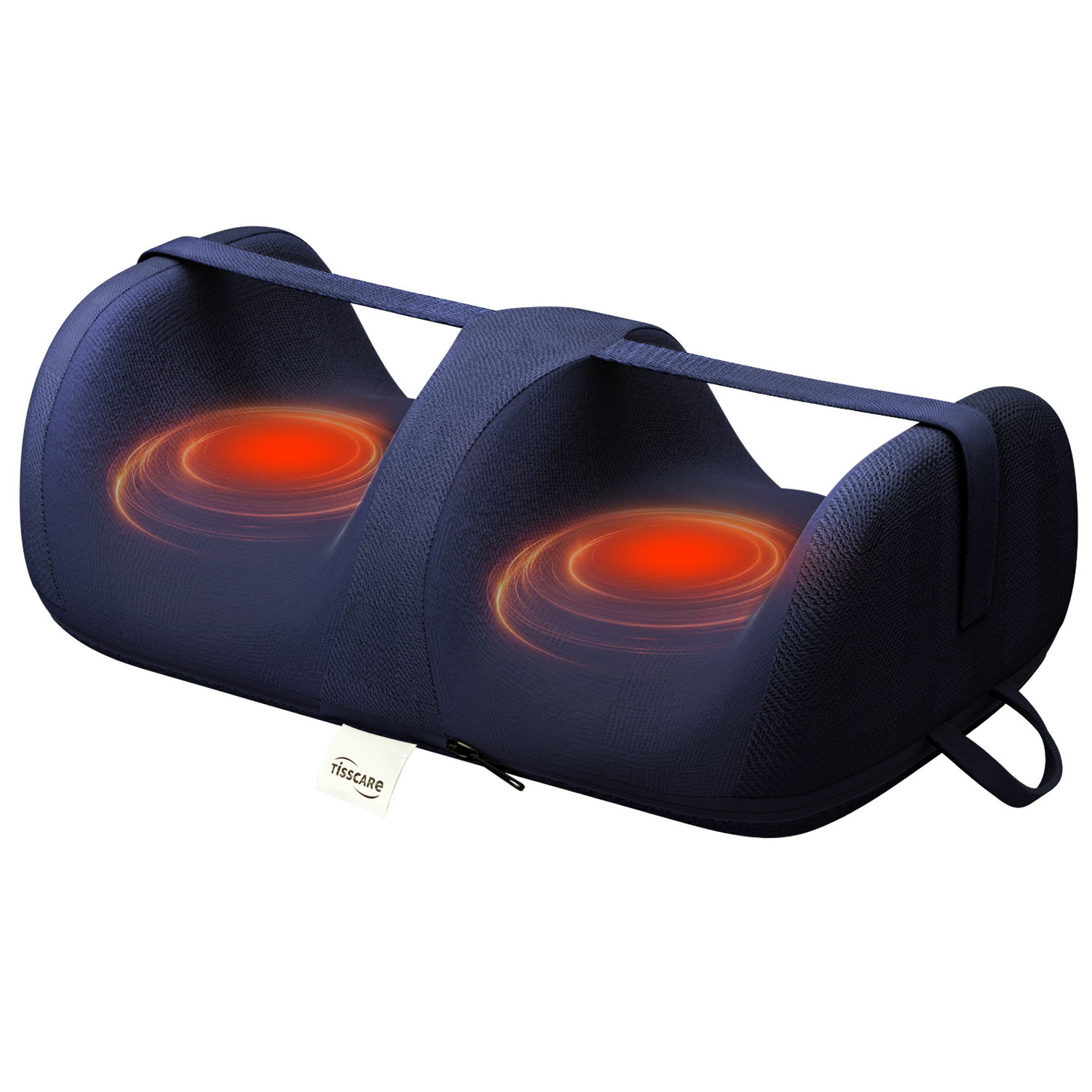Table of Contents:
How to Have A Safe and Effective Foot Massage During Pregnancy
- Common Foot Problems During Pregnancy
- How Foot Massage Can Help Relieve Foot Problems
- Avoid The Potential Dangers Of Foot Massage
- Tips On Foot Massage During Pregnancy

A woman's body will go through great changes during pregnancy. As the fetus grows and the mother's hormones change, pregnant women are likely to be troubled by some foot problems. These problems are especially obvious in the second and third trimesters of pregnancy. Experts point out that proper massage can effectively relieve swelling, pain and other problems in pregnant women's feet during pregnancy, so how to perform safe and effective foot massage is particularly important. The following article will take us through foot problems during pregnancy and how to relieve foot problems through safe and effective massage. Hope to help every pregnant mother have a wonderful and happy pregnancy experience.
Common Foot Problems During Pregnancy:
- Edema (swelling): By the third trimester, most expectant mothers will experience some swelling in their feet and legs. This is a normal response to pregnancy. As the fetus grows, the uterus puts pressure on the veins in the pelvis, slowing the return of blood to the heart. This can cause blood to pool in the small blood vessels in the feet, and the fluid to leak into surrounding tissues causing leg swelling, also known as edema.
- Overpronation (flat feet): During pregnancy, pregnant women have to gain 20 to 30 pounds of weight, which is almost a quarter of their usual weight. All this weight will eventually fall on the feet, and the extra weight will have an impact on the structure of the human foot, making it prone to arch damage. Especially in late pregnancy, the feeling is more obvious when standing for a long time.
- Leg Cramps & Varicose Veins: Pregnancy hormones can cause the walls of your veins to relax, increasing the pressure on your legs leading to varicose veins. In pregnancy, blood flow from the legs to the heart can decrease, resulting in pooling of blood in the legs, which tends to worsen varicose veins. Simultaneously, cramps occur when your muscles contract hard and suddenly. They might be a result of carrying extra pregnancy weight, changes in your circulation, or pressure from your growing baby on the nerves that lead to your legs.
Additionally, pregnant women may experience numbness and tingling, changes in foot size or shape, and foot and leg pain related to changes in walking posture and stride size.
How Foot Massage Can Help Relieve Foot Problems During Pregnancy?
Safe and effective foot massage during pregnancy can help relieve a variety of foot and leg discomforts:
- Reduce Edema: Foot massage can reduce foot and joint edema by stimulating the soft tissues of the feet.
- Improves Mood and Reduces Stress: Foot massage helps promote the release of endorphins, thereby relieving stress and improving happiness during pregnancy.
- Improves circulation: During pregnancy, the blood circulation of pregnant women will be affected, which can easily lead to leg cramps or swelling. Regular soothing foot massage can help improve blood circulation, relieve cramps and swelling, and relieve general fatigue.
- Relieve Foot Pain: Weight gain caused by pregnancy will put a lot of pressure on the pregnant woman's body. The legs and feet bear most of the pressure. It is easy to feel foot pain when walking and standing. Regular foot massage can soothe the feet and feet and leg muscles reduce body tension.
Avoid The Potential Dangers Of Foot Massage
While a foot massage can be helpful, it's necessary to remember the following points to avoid some potential dangers:
- Avoid massaging certain pressure points: Avoid stimulating certain pressure points near the ankles, which may irritate the pelvic muscles and uterus and lead to premature labor.
- Consult a doctor: Always consult your healthcare provider or doctor before starting any massage regimen during pregnancy. If you have pregnancy complications such as high blood pressure, preeclampsia, or a previous premature birth, massage is not recommended.
- Pay attention to hygiene: When performing manual massage, there may be a risk of infection if the masseur does not pay attention to hygiene, such as cleaning hands and using professional tools and disinfecting them after use.
Tips On How To Have A Safe And Effective Foot Massage During Pregnancy:
- Choose the right position: Semi-recumbent position is the most ideal position during pregnancy. Avoid lying flat, especially after the 20th week, as this puts pressure on major veins, resulting in reduced blood flow to the heart and fetus.
- Warm your feet first: We recommend soaking your feet in warm water for about 10-15 minutes before a foot massage. This can help relax the muscles and prepare them for the massage.
- Be gentle: Avoid squeezing your ankles too hard during pregnancy to avoid harm to the body and fetus. Use gentle techniques to caress the instep, gently turn the ankles, pull and rub the toes, etc. to achieve the desired effect. To achieve the purpose of relaxing the body.
- Use an electric foot massager: An electric foot massager is a great tool for foot massage during pregnancy. They are easy to use and often come with settings that allow you to personalize the massage to your requirements. But remember, use it only under proper guidance and avoid using it if it causes any discomfort or your doctor advises against its use. If you want to choose a foot massage machine suitable for use during pregnancy, the Tisscare foot massage machine is a good choice. It can easily meet the needs of simple use, easy portability, controllable intensity, and maintenance of hygiene. Welcome to consult!
- Use a massage oil or cream: Using a good quality massage oil or cream can help reduce friction and further soothe your feet. But avoid using essential oils without consulting a professional, as some contain ingredients that may be harmful during pregnancy.
- Stay hydrated: After a massage, drink plenty of water to help flush out toxins released from your body while staying hydrated.
- Listen to your body: If your foot massage causes any discomfort or feels uncomfortable, be sure to stop immediately.
- Consult your health professional: Before starting any massage regimen, be sure to consult your healthcare provider and ask them to provide you with appropriate recommendations based on your historical health.
At last but important! Every woman's response to massage during pregnancy will be unique. The important thing is to have open communication with both the healthcare provider and the person performing the massage, ensuring a safe and soothing massage experience.
Hope this article can bring you some help. The process of pregnancy is a wonderful but difficult journey. The prospect can be both exciting and intimidating, but remember, it's all part of a most extraordinary journey that ends in the joy of motherhood.

